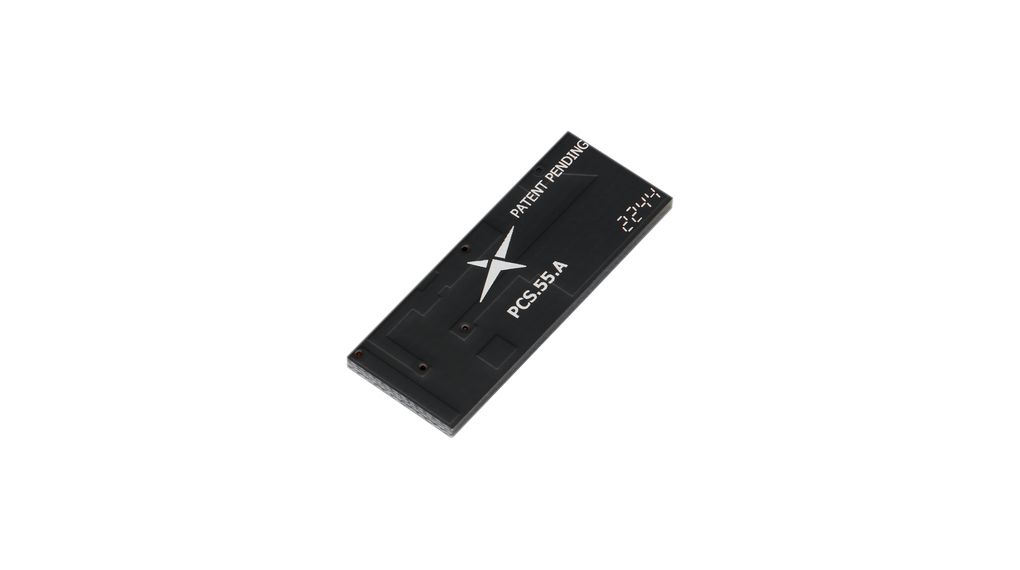In the world of IoT devices, where components are becoming smaller and smaller, cellular antennas are essential components that facilitate connectivity and communication. However, embedding an efficient cellular antenna into a small-scale device is not without its challenges. Among these, controlling the ground plane—a crucial component of antenna performance—needs a lot of focus. This article delves into the intricate and fascinating world of cellular antennas for small-sized Internet of Things devices, emphasising the significance of ground plane factors.
The Importance of Cellular Antennas in IoT Devices
Cellular antennas enable IoT devices to transmit and receive signals over the cellular network, thus providing a gateway to communicate data over vast distances. This capability is crucial for applications where the deployment of small devices with dependable connectivity is essential, like smart city infrastructure, health monitoring, and remote sensing.
What are Ground Planes and Why are They Important?

A ground plane is a conductive surface that acts as a reflective layer to the radiating element of an antenna. It assists in forming the antenna’s current return path, which is essential to the formation of a radiation pattern. The ground plane is essentially like the ‘other half’ of a dipole antenna, and it is essential to its balanced operation. In an antenna system, a ground plane affects the radiation pattern, bandwidth, impedance, and overall efficiency of the system by shaping and directing the signal. When designing small devices, this component of the antenna system is frequently disregarded, which can result in poor performance and communication problems. A properly designed ground plane ensures that the antenna system is resonant at desired frequencies, leading to efficient communication.
The Role of Ground Planes in Cellular Antennas
A ground plane is important in the context of cellular antennas for two main reasons:
Impedance Matching: To guarantee optimal power transfer, cellular antennas must have their impedance matched with the transmission line, which is normally 50 ohms. In order to keep the impedance match, the ground plane’s design must take into account its potential to alter the antenna’s impedance.
Radiation Pattern Control: A well-designed ground plane helps create a consistent and directed radiation pattern, which is vital for cellular antennas that need to maintain a connection with a network tower, which is often located several kilometres away.
How to Optimise Ground Planes in Compact IoT Devices

Compact IoT devices pose unique design challenges, given their limited space for antenna installation. Ground planes are often a quarter wavelength of the signal at the lowest operational frequency, which means they are usually too big to fit inside these tiny devices. A compromised ground plane may cause a number of problems, including:
- Reduced antenna efficiency and gain.
- Impedance mismatch.
- A distorted radiation pattern, causing unreliable connectivity.
Designing cellular antennas for compact IoT devices requires innovative approaches to address the limitations that can be found with ground planes. Here are some ways to overcome the challenges posed:
- PCB utilisation: Using the Printed Circuit Board (PCB) as part of the ground plane is a common technique in compact devices. Care must be taken when designing the PCB layout, allocating enough room for the ground plane while taking other components’ locations into account.
- Innovative antenna designs/types: Small wireless devices frequently use antennas like the Planar Inverted-F Antenna (PIFA) because of their low profile and capacity to operate with a smaller ground plane. These types of antennas are becoming very common in the mobile phone market.
- High dielectric materials: It is possible to “shrink” the wavelength of the signal in the medium by using materials with a high dielectric constant, which permits the use of a smaller ground plane without compromising performance.
- Using the chassis: The chassis can function as a useful ground plane for gadgets with metal casings or frames. Wearable technology is one area where this technique can be especially helpful because the metal body of the gadget can offer a sufficient surface area.
- Adding load coils: The antenna can be made electrically longer without physically growing larger by incorporating a loading coil into the design. This increases the antenna’s efficiency inside a smaller ground plane by enabling it to resonate at lower frequencies.
- Near-field resonant parasitics (NFRP): With this method, the antenna is surrounded by parasitic elements that resonate and effectively increase the ground plane’s electrical size without actually growing the device’s size.
- Active tuning components: Active tuning devices like varactors or MEMS switches can be used to modify the antenna’s resonance frequency in order to compensate for the antenna’s smaller ground plane.
Considerations for Choosing an Antenna for a Compact IoT Device
Take into account the following ground plane design factors when creating or choosing an antenna for a small IoT device:
- Size and shape: Even in small devices, the ground plane should be as large as the design can afford, ideally extending out in all directions from the antenna feed point.
- Material: An excellent electrical conductor, usually copper, should be used for the ground plane of the antenna.
- Positioning: To prevent detuning effects from the user’s hand or surrounding objects, the antenna must be carefully positioned in reference to the ground plane.
- Integration: To reduce any ground plane performance concerns, antennas should be incorporated into the design at an early stage of the development process.
Recommended Product
Taoglas PCS.55.A Cellular Antenna

The PCS.55.A is a patent pending compact cellular antenna designed specifically for IoT devices with small ground planes. It combines revolutionary antenna design techniques with the antenna integration experience of Taoglas to provide a solution for wideband coverage of both 5G/4G LTE and GNSS bands, including the most challenging 600-700MHz bands.
The PCS.55.A provides a simple off-the-shelf solution for LTE, CAT-M, NB-IoT, & GNSS applications and is only 27x10x1.6mm. This compact cellular antenna is the perfect antenna for small IoT devices, where requirements for smaller PCB designs are becoming more dependent on the antenna size. This antenna requires an extremely small keep-out area and needs far fewer matching components compared to most other compact cellular antennas on the market. This results in a smaller and less complex design, reducing the bill of materials for the device and also helps speed up time-to-market.
Features
- Worldwide product – Three different matching circuits can be utilised to provide optimum performance based on the customers’ geolocation. The optimum components for North America (NA), European Union (EU), and World Wide (WW) have been determined to allow designers to easily integrate the PCS.55.A to get the best performance for any particular deployment scenario. The PCS.55.A is easy to integrate using standard SMD technologies, and the matching circuits for each deployment (NA, EMEA, or WW) have been simplified to a 3 component configuration to allow for greater flexibility on the user side.
- Simplified integration package: The use of only 3 matching components per integration (as opposed to up to 15 on comparable antennas) allows the customer to use the antenna with a smaller device bill-of-materials with fewer ”lossy” matching components required.
- Small keep-out area: Extremely compact keepout area allows the antenna to be integrated onto small, narrow PCBs where space is at a premium.
Key product specifications:
| Material | FR4 |
| Frequency Range | 600MHz to 3GHz |
| Efficiency | Up to 47% |
| Radiation Pattern | Omnidirectional |
| Mounting | Surface Mount |
| Dimensions | 27 x 10 x 1.6mm |
| Weight | 0.9g |
| Temperature Range | -40℃ to +85℃ |











